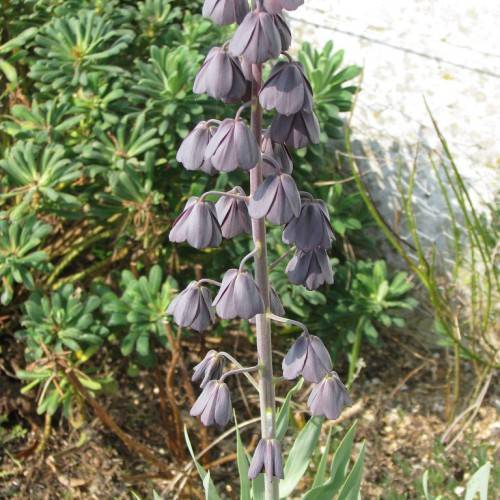
Persian lily
Fritillaria persica
Cycle:
Perennial
Watering:
Average
Hardiness Zone:
5 - 8
Flowers:
Flowers
Sun:
Full sun,part shade
Leaf:
Yes
Growth Rate:
Low
Maintenance:
Low
Drought Tolerant:
Yes
Care Level:
Medium
watering
Persian lilies should be watered when the top inch or 2 of soil becomes dry. Aim to water once a week and make sure the plant is thoroughly soaked. Depending on the soil type and climate, Persian lilies may need more water during particularly hot and dry spells. During the growing season, don't allow the soil to completely dry out because this will cause the flower buds to drop off. In the actively growing months, increase water frequency as needed, perhaps to every 3-4 days. During the winter when the plant is dormant, reduce watering to no more than once every 2 weeks.
sunlight
Persian lilies prefer full sun for most of the day. The best hours of sun for Persian lilies are from 8 a.m. to 4 p.m. During spring through late summer, these plants should receive 6-8 hours of direct sun each day. During shorter winter days they should get 4-5 hours of direct sunlight. It is important to remember that Persian lilies are sun-lovers, and they should not be shaded during the peak hours of the day when they receive the most intense sunlight.
pruning
Persian lily (Fritillaria persica) should be pruned when new buds appear in the spring. This is usually around April or May. To properly prune your Persian lillies, remove any dead or damaged foliage, and prune all stems that have bloomed back to the lowest set of healthy leaves. This will allow the plant to focus its energy on new growth and stronger stems. Be sure to make a clean cut as pruning your Persian lillies aggressively can weaken its stems and disrupt its ability to flower. Keep in mind, pruning too much may prevent your Persian lilly from flowering in subsequent years as the flower stalks are usually produced on old wood.
